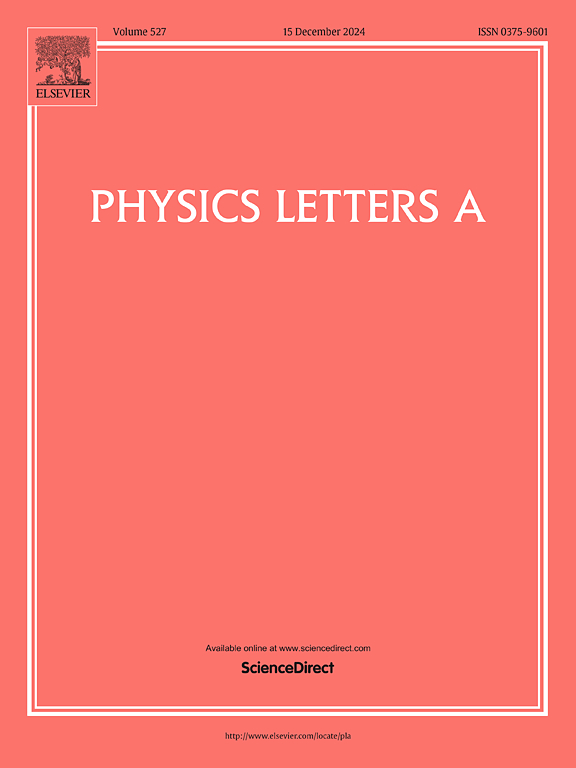Cosmological model with linear equation of state parameter in f(R,Lm) gravity
IF 2.3
3区 物理与天体物理
Q2 PHYSICS, MULTIDISCIPLINARY
引用次数: 0
Abstract
In this paper, we examine the universe's expansion in gravity for a particular form of . The field equations for flat FLRW metric with matter Lagrangian are derived. Hubble parameter in terms of red-shift(z) are derived using the linear form of Equation of State (EoS) parameter . By using Bayesian statistical techniques based on -minimization technique, we have obtained the best fit values of the model parameters of this model for cosmic chronometer and supernovae Pantheon datasets. The evolution of the equation of state parameter(ω), energy density (ρ), pressure (p), cosmographic parameters, and the impact of the energy conditions with best-fit values of the model parameters are all thoroughly examined. We have also analyze Om diagnostic's behaviour and determine the present age of universe for this model.
具有 f(R,Lm)引力状态参数线性方程的宇宙学模型
本文研究了 f(R,Lm)=R2+Lmn 这一特定形式的 f(R,Lm) 引力下的宇宙膨胀。本文推导了物质拉格朗日 Lm=ρ 的平面 FLRW 度量的场方程。利用状态方程参数 ω=w0+w1z 的线性形式,推导出红移(z)方面的哈勃参数。通过使用基于χ2最小化技术的贝叶斯统计技术,我们得到了该模型参数在宇宙天文台和超新星潘神数据集上的最佳拟合值。我们深入研究了状态方程参数(ω)、能量密度(ρ)、压力(p)、宇宙学参数的演变,以及能量条件对模型参数最佳拟合值的影响。我们还分析了 Om 诊断的行为,并确定了该模型目前的宇宙年龄。
本文章由计算机程序翻译,如有差异,请以英文原文为准。
求助全文
约1分钟内获得全文
求助全文
来源期刊

Physics Letters A
物理-物理:综合
CiteScore
5.10
自引率
3.80%
发文量
493
审稿时长
30 days
期刊介绍:
Physics Letters A offers an exciting publication outlet for novel and frontier physics. It encourages the submission of new research on: condensed matter physics, theoretical physics, nonlinear science, statistical physics, mathematical and computational physics, general and cross-disciplinary physics (including foundations), atomic, molecular and cluster physics, plasma and fluid physics, optical physics, biological physics and nanoscience. No articles on High Energy and Nuclear Physics are published in Physics Letters A. The journal''s high standard and wide dissemination ensures a broad readership amongst the physics community. Rapid publication times and flexible length restrictions give Physics Letters A the edge over other journals in the field.
 求助内容:
求助内容: 应助结果提醒方式:
应助结果提醒方式:


